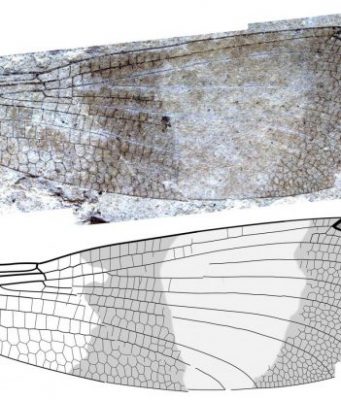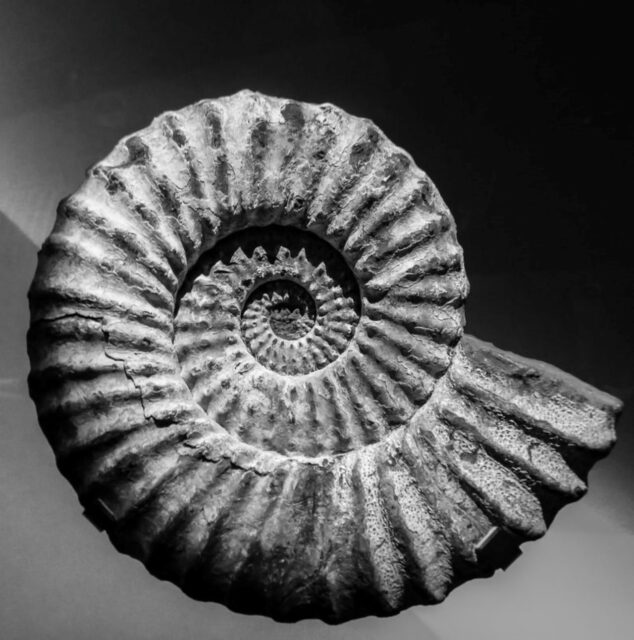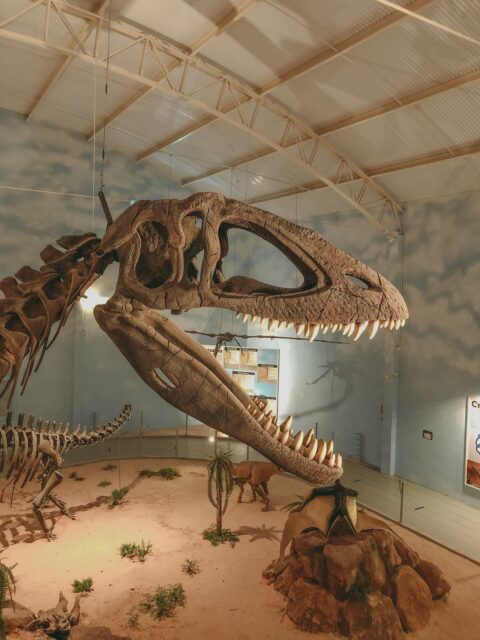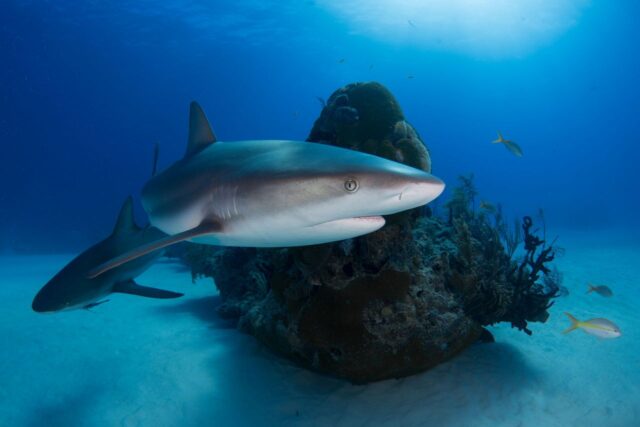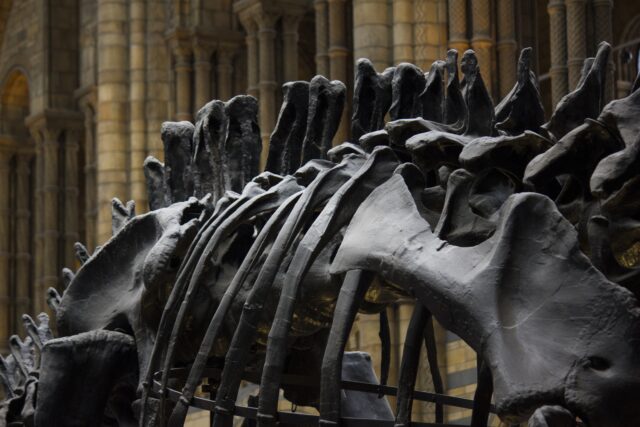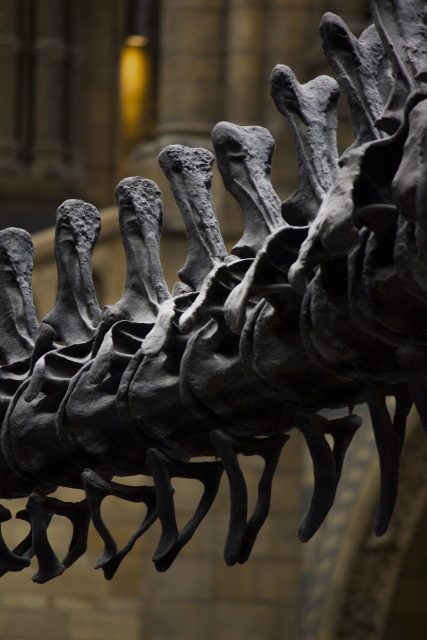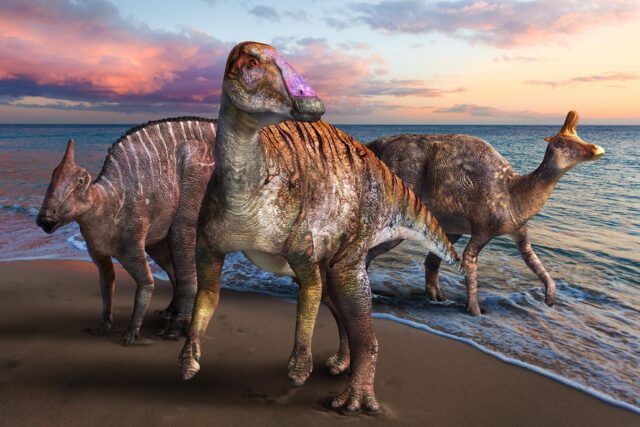A well-preserved female land snail fossilized in Cretaceous amber shortly after the birth of her offspring was discovered in Myanmar. The discovery offers unprecedented insights into the ecology and behavior of snails that lived 99 million years ago.
Land snails...
The new dinosaur species, Tlatolophus galorum is herbivorous dinosaur from 73 million years ago that emitted strong sounds. Excavations in Mexico reveal an intact fossil of a so-called peaceful but talkative dinosaur. The animal crest's shape looks like "a...
A more reliable way of estimating the size of megalodon shows the extinct shark may have been bigger than previously thought, measuring up to 65 feet, nearly the length of two school buses. Earlier studies had ball-parked the massive...
By closely examining the jaw mechanics of juvenile and adult tyrannosaurids, some of the fiercest dinosaurs to inhabit earth, scientists led by the University of Bristol have uncovered differences in how they bit into their prey.
They found that younger...
Paleontologists have discovered two new species of mammal-like, burrowing animals that lived about 120 million years ago in what is now northeastern China. The new species, described today in the journal Nature, are distantly related but independently evolved traits to...
The fearsome tyrannosaur dinosaurs that ruled the northern hemisphere during the Late Cretaceous period (66-100 million years ago) may not have been solitary predators as popularly envisioned, but social carnivores similar to wolves, according to a new study.
The finding,...
Research on a newly discovered bird fossil led by The University of Texas at Austin found that a unique brain shape may be why the ancestors of living birds survived the mass extinction that claimed all other known dinosaurs.
Today,...
A study led by scientists at the American Museum of Natural History has resolved a long-standing controversy about an extinct "horned" crocodile that likely lived among humans in Madagascar. Based on ancient DNA, the research shows that the horned...
Scientists from Mahasarakham University (Thailand) and the University of Bonn have examined the newly discovered caudal vertebrae of a spinosaurid dinosaur that could belong to Siamosaurus suteethorni. The comparison with finds around the world led to the realization that...
An international team of paleontologists has identified a new genus and species of hadrosaur or duck-billed dinosaur, Yamatosaurus izanagii, on one of Japan's southern islands.
The fossilized discovery yields new information about hadrosaur migration, suggesting that the herbivors migrated from...
Archaeologists from the Universities of Manchester and Cardiff have discovered the origins of Arthur's Stone, one of the UK's most famous Stone Age monuments.
Manchester's Professor Julian Thomas, who led the excavation, says the imposing Herefordshire tomb is linked to...




